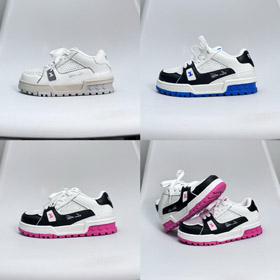Home >
The Historical Journey and Cultural Essence of Balenciaga
The Historical Journey and Cultural Essence of Balenciaga
2025-04-23
Origins and the Visionary Cristóbal Balenciaga
In the heart of Getaria, a coastal town in the Basque Country of Spain, in 1895, Cristóbal Balenciaga was born. His early exposure to the art of sewing, under the guidance of his mother, a seamstress, planted the seeds of his future legacy. At the age of 13, he crafted a dress for the Marquesa de Casa Torres, a pivotal moment that set him on a path to fashion greatness. In 1917, he opened his first boutique in Madrid, quickly gaining acclaim for his intricate tailoring and innovative designs that seamlessly merged traditional Spanish aesthetics with modern silhouettes.
In 1937, Balenciaga made a transformative move to Paris, where he established the House of Balenciaga at 10 Avenue George V. This era marked the beginning of his revolutionary impact on the fashion world. Unlike many of his contemporaries, he prioritized structural integrity over fleeting trends. His "Balloon Dress" (1953), with its voluminous, sculptural shape, and the "Sack Dress" (1957), which liberated the body from the constraints of corsets and rigid waistlines, were bold declarations of his design philosophy: fashion as architecture. These creations not only challenged the post-war "New Look" dominated by Christian Dior but also laid the foundation for minimalist and avant-garde fashion movements decades later.
Cultural Impact and Artistic Legacy
Balenciaga's atelier was a sanctuary of craftsmanship, where he collaborated closely with skilled artisans to perfect every detail. He revered the purity of fabric and the precision of cut, often stating, "I do not do fashion; I am fashion." His designs were worn by icons like Gloria Guinness and Mona von Bismarck, who appreciated the understated luxury and timeless elegance of his pieces. Beyond clothing, he influenced a generation of designers, including Yves Saint Laurent, who once said, "Balenciaga was the master of us all."
The house also became a cultural symbol of resistance during turbulent times. During World War II, Balenciaga remained in Paris, refusing to abandon his workshop, and continued to create under the Occupation, preserving the spirit of French haute couture when many others fled. His 1947 "Aerodynamic" collection, characterized by sleek, streamlined shapes, reflected both the austerity of the era and a forward-looking optimism.
Reinvention in the Modern Era
After Cristóbal Balenciaga's retirement in 1968, the house went through a period of relative obscurity until its revival in the late 20th century. In 1997, Nicolas Ghesquière was appointed creative director, breathing new life into the brand with a futuristic vision. His "Neo-Couture" collections merged techno-inspired aesthetics with Balenciaga's architectural heritage, introducing iconic pieces like the "Le Dix" handbag and oversized outerwear that appealed to a new generation of fashion enthusiasts. Ghesquière's tenure solidified Balenciaga's reputation as a brand unafraid to blend the past with the avant-garde.
In 2015, Demna Gvasalia took the helm, catapulting Balenciaga into the digital age with a provocative, streetwear-driven ethos. His "Triple S" sneakers (2017), with their chunky, retro design, became a global phenomenon, embodying the "ugly chic" trend and sparking debates about the democratization of luxury. Gvasalia's collections, often featuring oversized hoodies, dad sneakers, and ironic branding, challenged traditional notions of luxury by embracing subcultural influences and viral marketing. His collaboration with brands like IKEA (the "FRAKTA" tote bag) and partnerships with artists like Kanye West further blurred the lines between high fashion and mass culture, making Balenciaga a dominant force in the Instagram era.
Sustainability and Contemporary Relevance
Today, Balenciaga continues to evolve under the creative direction of Matthieu Blazy, who took over in 2022. Blazy has emphasized sustainability and circular design, incorporating upcycled materials and modular pieces into his collections. His "Bottega Veneta"-inspired leather goods and deconstructed tailoring reflect a commitment to both innovation and environmental responsibility, aligning with the values of modern consumers.
The brand's cultural influence extends beyond fashion. Balenciaga has become a staple in music videos, street style, and popular culture, with celebrities like Beyoncé and Bella Hadid showcasing its bold designs. Its runway shows, often staged in unconventional venues with immersive digital installations, have become must-watch events that transcend the fashion world, embodying the brand's reputation as a disruptor and innovator.
Conclusion: A Legacy of Innovation
From Cristóbal Balenciaga's revolutionary silhouettes to Demna's viral streetwear and Blazy's sustainable vision, the house has consistently redefined itself while staying true to its core values of craftsmanship, innovation, and fearless creativity. Balenciaga is not just a fashion brand; it is a cultural institution that has shaped the course of style for over a century, proving that true luxury lies in the courage to challenge norms and the vision to imagine what comes next.
For a curated selection of Balenciaga-inspired designs and contemporary fashion pieces, explore the diverse catalog at ACbuy Spreadsheet, where quality and affordability meet modern style. Whether you're drawn to iconic sneakers or avant-garde apparel, this platform offers a range of options that reflect Balenciaga's enduring legacy of innovation.



















